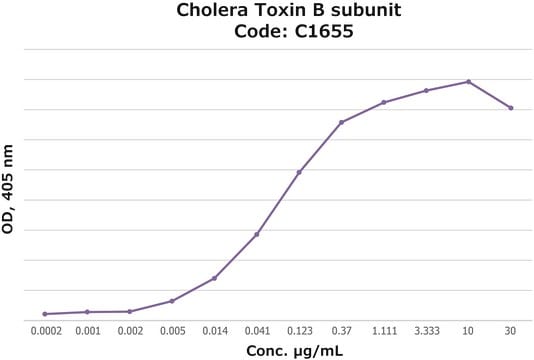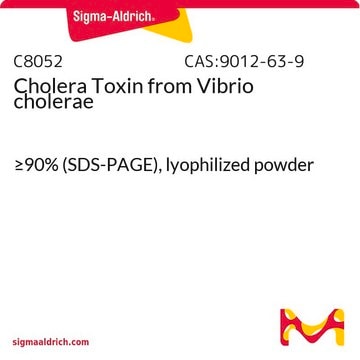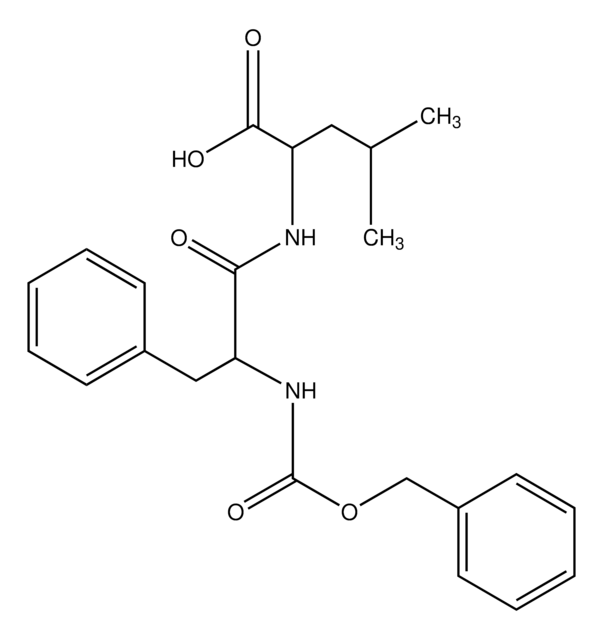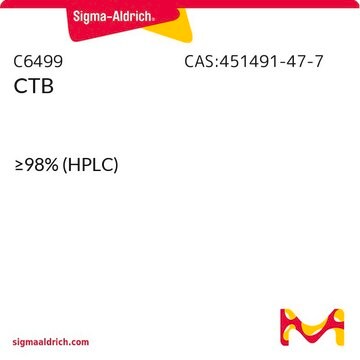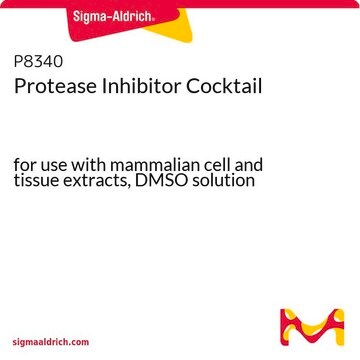C3741
Cholera Toxin B subunit
peroxidase conjugate (Contains ~ 2 moles HRP/mole of CTB. ~100 μg HRP conjugated to ~45 μg CTB), lyophilized powder
Sinonimo/i:
CTB
Scegli un formato
290,00 €
Prezzo di listino580,00 €Risparmia il 50%Scegli un formato
About This Item
290,00 €
Prezzo di listino580,00 €Risparmia il 50%Prodotti consigliati
Coniugato
peroxidase conjugate (Contains ~ 2 moles HRP/mole of CTB. ~100 μg HRP conjugated to ~45 μg CTB)
Livello qualitativo
Stato
lyophilized powder
peroxidase activity
>100 U/mg, pH 6.0, 20 °C
PM
pentamer 57 kDa
~12 kDa
Solubilità
H2O: soluble 10 mg/mL
Temperatura di conservazione
2-8°C
Stringa SMILE
CCOc1ccccc1C(=O)Nc2ccc(Cl)c(c2)C(F)(F)F
InChI
1S/C16H13ClF3NO2/c1-2-23-14-6-4-3-5-11(14)15(22)21-10-7-8-13(17)12(9-10)16(18,19)20/h3-9H,2H2,1H3,(H,21,22)
YDXZSNHARVUYNM-UHFFFAOYSA-N
Cerchi prodotti simili? Visita Guida al confronto tra prodotti
Descrizione generale
Specificità
Applicazioni
- In the isolation of lipid rafts and analysis of B-cell receptor distribution, signaling and ubiquitination.[3]
- In the staining of lipid rafts in brain tissues.[4]
- As a transganglionic tracer to determine the central projections of the anterior ethmoidal nerve in rat.[5]
Azioni biochim/fisiol
Confezionamento
Avvertenza
Definizione di unità
Stato fisico
Ricostituzione
Avvertenze
Danger
Indicazioni di pericolo
Consigli di prudenza
Classi di pericolo
Resp. Sens. 1
Codice della classe di stoccaggio
13 - Non Combustible Solids
Classe di pericolosità dell'acqua (WGK)
WGK 2
Punto d’infiammabilità (°F)
Not applicable
Punto d’infiammabilità (°C)
Not applicable
Scegli una delle versioni più recenti:
Possiedi già questo prodotto?
I documenti relativi ai prodotti acquistati recentemente sono disponibili nell’Archivio dei documenti.
I clienti hanno visto anche
Filtri attivi
Il team dei nostri ricercatori vanta grande esperienza in tutte le aree della ricerca quali Life Science, scienza dei materiali, sintesi chimica, cromatografia, discipline analitiche, ecc..
Contatta l'Assistenza Tecnica.